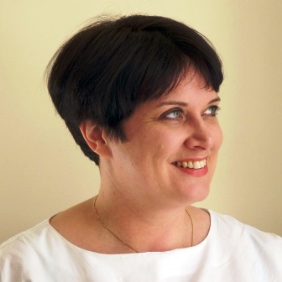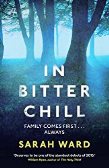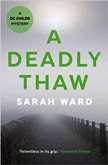
You built up a reputation
as a reviewer and blogger of crime fiction. What took you from the safety of
writing about authors to becoming one yourself?
When I first started reviewing I had no intention of writing a
book. The reading for the various sites that I was reviewing for, though, gave
me plenty to think about and expanded my notion of what constituted crime
fiction. It was the start of the Nordic Noir phenomena and it made me realise location
could act as a catalyst for the plot. Setting is hugely important in all my
books and I realised that an area I knew well, the Peak District, would be the
perfect place for a murder.
I think it was around 2012, that I decided to have a go at my
own writing and see how far I could get with a novel. I finished a book that I
wasn’t particular happy with but my characters of DI Sadler and DC Connie
Childs made their first appearance there and I decided to use them in the novel
that became In Bitter Chill.
You are well known for
your knowledge and love of Nordic Noir, and you have a special affinity to
Iceland. Is the Nordic element over? Is Noir now global?
The term Nordic Noir is strange because it covers a range of
writing from hardboiled to cosy mysteries. I think any umbrella term which
captures the readers’ imagination is a good thing and a lot of Scandi writers
who might not have been translated into English found a wider readership as all
things Nordic became more popular. I don’t think the trend I over but I think
publishers are more discerning about what is being translated. I definitely
still read it!
You write about
Derbyshire, but you’re not a born and bred Derbyshire lass. Is there something
special about that county that attracts your style of descriptive, thriller
writing?
I’m only from over the border in Cheshire so it was an area I
already knew well. I live very high up in the Peaks and in the winter I’m
occasionally cut off which gives this wonderful claustrophobic feeling to the place.
I don’t think it’s necessarily specific to Derbyshire - I love writing about
isolated rural communities and how within a stunning landscape, awful things
can happen. I like to combine dialogue with descriptive prose, there’s no point
using an atmospheric setting if you’re going to ignore it in your writing.



What books influenced you
... after Enid Blyton?
I was a huge Agatha Christie fan and read lots of the other
golden age authors. Christie’s plots can be excellent and I love the way she
pulls her readers into the mystery. I also had a secret crush on Lord Peter
Wimsey so Dorothy Sayers books were a great read for me as a teenager.
I read and re-read Ruth Rendell and I remember, in my twenties
being blown away by Sara Paretsky and Sue Grafton. And, of course, the Nordic
writers especially Arnaldar Indridason and Yrsa Sigurdardottir.
Are there any particular
authors who have recognisably influenced your style?
That’s hard to say. I wrote my first book, In Bitter Chill, while I was living in Athens, Greece
and I was very much feeling my way in terms of how I wanted to write. I like authors
whose books are very setting focused so I really admire Elly Griffiths and
William Shaw but, really, I read these authors after I started writing. I’m not
sure I’d be able to pick out my own influences.
You have written three
murder mysteries staring DC Childs, who has her own hang-ups, and each one has
a near central theme of family: a missing girl; the complexities of family
relationships; and a family violently obliterated. What is it with you and
dysfunctional family relationships?
Ha ha. My Dad’s noticed this too. My family are perfectly fine
but I think that, living in an isolated community where people know each other’s
secrets going back generations a lot of tension which can simmer over into
murder takes place within the home. I think, generally, families can be a huge
source of strain for people and yet there’s an unspoken acknowledgement about
ties that underpin the relationship, say, between brother and sister. I explore
this in my latest book A Patient Fury.
You have a new book being
published in September this year. Can you give us a taster?
In the
1950s, six girls walk into a railway tunnel and only five emerge. Decades
later, the reverberations of the act of violence which took place begin to be
felt and Mina’s dying mother asks her to “find Valerie”. Meanwhile Connie
Childs is concerned to hear that women have been dying unexpectedly and begins
to think that someone is settling old scores.
I
really enjoyed writing A Shrouded Path
as part of the action takes place in the 1950s, a period I don’t remember which
meant more research than usual. The
fifties is a period of great nostalgia for my mother’s generation and it was
moving to read about it in more depth.